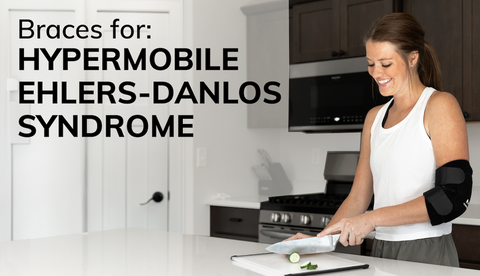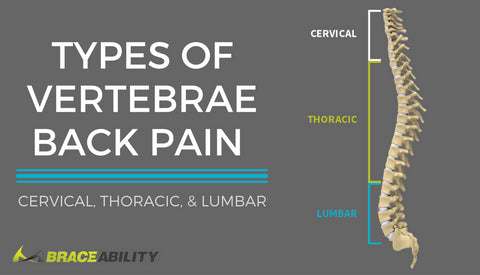Floating Kneecap Blog
A ‘Floating Kneecap’ can share symptoms with many things: Luxating Patella, Patellar Dislocation, Patellar Tendonopathy, Patellar Tendonitis, Patellar Chondromalacia, and Patella Femoral Syndrome, to name a few.
For all of these, though, the root of the issue is the same: the kneecap or knee joint is in pain - so what makes the ‘floating knee’ different?
Floating Kneecap
A Floating Kneecap, officially known as a Luxating Patella, is caused by the kneecap dislocating or moving from its normal positioning.
See, a healthy knee sits in a groove (called the trochlear groove) at the end of the femur. This allows the kneecap to move smoothly during activities like walking, running, or bending over. The patella, acting as a fulcrum, allows for efficient movement of the knee without putting too much stress on the joint itself.
However, in a floating kneecap, the knee is displaced from its normal position in the groove. Occurring partially or completely, this dislocation leads to instability or joint dysfunction, resulting in weakness and knee pain - making it prone to giving way when put under pressure.

Causes of Floating Kneecap
There are dozens of reasons that could lead to having a floating kneecap. Some possible causes are as follows:
Body Structure
Certain anatomical features such as a shallow or malformed trochlear groove, abnormal alignment of the bones (such as “knock knees” or “bow legs”), a high-riding patella, or a wide pelvis can increase the risk of patellar instability.
Trauma
Direct Impact: A forceful blow to the knee, such as during a fall or collision, can dislocate the patella. This can damage the ligaments, cartilage, and other structures that help stabilize the knee joint, leading to repeating instability.
Twisting Injuries: Sudden twisting or pivoting motions, especially when the foot is planted in place, can also cause the patella to dislocate. This often occurs during sports activities like soccer, basketball, or skiing.
Overuse or Repetitive Stress
High-Impact Activities: Engaging in high-impact sports or activities that involve repetitive jumping, cutting, or squatting motions can place significant stress on the knee joint. Over time, this can lead to wear and tear on the structures that support the patella, increasing the risk of instability.
Poor Training Techniques: Improper training techniques, such as overtraining, inadequate rest periods, or improper form during exercises, can increase stress on the knee joint.
Occupational Factors: Certain occupations or activities that require prolonged periods of kneeling, squatting, or climbing stairs can also contribute to overuse injuries and patellar instability, especially if proper ergonomic principles are not followed.
Previous Injuries
Ligament Injuries: Injuries to the ligaments surrounding the knee, such as the ACL, can disrupt the normal stability of the joint and increase the risk of patellar instability. This is because these ligaments play a crucial role in maintaining proper alignment and control of the patella within its groove.
Meniscus Tears: Damage to the meniscus (the cartilage cushioning the knee joint) can alter the internal mechanics of the knee. The meniscus helps absorb shock and stabilize the knee during movement, so damage can indirectly affect patellar stability.
Diagnostic Process
Diagnosing a floating kneecap involves a comprehensive approach to look at symptoms, evaluate knee stability, and identify any underlying structural issues. The diagnostic process typically includes the following steps:
Medical History Review
The healthcare provider will begin by conducting a thorough review of the patient's medical history. This includes gathering information about the onset of symptoms, previous knee injuries or surgeries, and any relevant medical conditions. Understanding the patient's activity level and the nature of activities that increase or decrease symptom levels is crucial for accurate diagnosis and treatment planning.
Physical Examination
A physical examination is performed to evaluate the stability, range of motion, and overall condition of the knee joint. The healthcare provider will assess for signs of swelling, tenderness, and instability during various movements, such as flexion and extension of the knee. Special tests, such as the apprehension test or the J sign test, may be used to assess patellar stability and detect signs of dislocation.
Imaging Tests
Imaging studies, including X-rays, MRI, or CT scans, may be ordered to visualize the position of the kneecap and assess for any associated injuries. X-rays can reveal the alignment of the patella within the trochlear groove and detect fractures or bone abnormalities. MRI and CT scans provide detailed images of soft tissues, such as ligaments, cartilage, and tendons, allowing for the detection of any tears, inflammation, or damage that may contribute to patellar instability.
Treatment of Floating Kneecap
When it comes to managing patellar dislocation, treatment options vary depending on the severity of the condition, underlying causes, and individual patient factors. Both conservative and surgical approaches may be considered to address patellar instability effectively.
Conservative Treatments:
Rest, Ice, Compression, Elevation (RICE):
Initially, the primary goal of treatment is to reduce pain and swelling associated with patellar dislocation. Resting the knee, applying ice packs, using compression bandages, and elevating the leg can help alleviate symptoms and promote healing in the acute phase of injury. Check out this article if you’d like to learn more about the RICE method!
Physical Therapy Exercises:
Physical therapy plays a crucial role in rehabilitating the knee and preventing recurrent dislocations. Therapeutic exercises focus on strengthening the muscles around the knee, particularly the quadriceps. Strengthening these muscles helps improve joint stability and support the patella, reducing the risk of future dislocations.
Quadriceps Strengthening Exercises:
Quadriceps strengthening exercises are essential in stabilizing the knee joint and providing support to the patella. Physical therapists often recommend exercises such as:
Straight Leg Raises: Lie on your back with one leg bent and the other straight. Lift the straight leg off the ground, keeping it straight, then lower it back down slowly.

Terminal Knee Extension: Stand with a resistance band tied around the knee, then straighten the knee against the resistance of the band.

Floating Kneecap Stabilization Braces:
Patellar stabilizer braces stand out as one of the most valuable tools in the management of a floating kneecap (patellar dislocation), providing targeted support to address the underlying instability and realign the displaced kneecap within its groove. These braces feature specialized designs aimed at exerting pressure on the patella, promoting proper alignment and reducing the risk of displacement.
Constructed with a reinforced buttress or patellar pad, patellar stabilizer braces apply consistent pressure to the patella, effectively stabilizing its position during movements involving bending, twisting, or weight-bearing activities. By keeping the patella properly aligned within the trochlear groove, these braces help restore normal joint mechanics and prevent further episodes of dislocation.
Braces are particularly beneficial for individuals with moderate to severe patellar instability associated with a floating kneecap. They offer essential support and stability, allowing individuals to engage in daily activities and physical exercises with confidence - while minimizing the risk of recurrent dislocations.
Surgical Option:
Reconstruction Procedures:
For severe cases involving extensive ligament damage, recurrent dislocations, or chronic instability, reconstruction procedures may be necessary to restore normal knee function. This may involve repairing torn ligaments, such as the medial patellofemoral ligament (MPFL), or performing more extensive realignment surgeries to address underlying anatomical abnormalities and improve patellar tracking.
Importance of Individualized Treatment Plans:
The importance of individualized treatment plans cannot be understated. Tailored to each patient's specific needs, activity level, and underlying risk factors, a personalized treatment course is essential. No two cases of patellar dislocation are exactly alike, and what works well for one patient may not be as effective for another.
Healthcare providers take into account factors such as the severity of the dislocation, presence of associated injuries, patient's age, level of physical activity, and underlying anatomical abnormalities when developing a treatment plan. By considering these factors, treatment can be optimized to address the root causes of patellar instability and provide the best possible outcomes for each patient.
Conclusion
In the realm of knee injuries and conditions, the term "floating kneecap" may seem like just another term in a sea of similar-sounding diagnoses. However, understanding the unique characteristics and implications of a floating kneecap, also known as a Luxating Patella, sheds light on its distinct nature and challenges.
While a variety of knee-related issues can share similar symptoms with a floating kneecap, the root cause remains consistent: pain and instability in the kneecap or knee joint. Unlike other conditions, a floating kneecap involves the displacement or dislocation of the kneecap from its normal positioning within the trochlear groove at the end of the femur. This displacement leads to instability, weakness, and pain, making the knee prone to giving way under pressure.
In conclusion, navigating the complexities of a floating kneecap requires a broad understanding of its causes, symptoms, and treatment options. By recognizing the distinct characteristics of this condition and implementing individualized treatment plans, healthcare providers can empower patients to overcome challenges, restore knee function, and regain stability in their daily lives.











